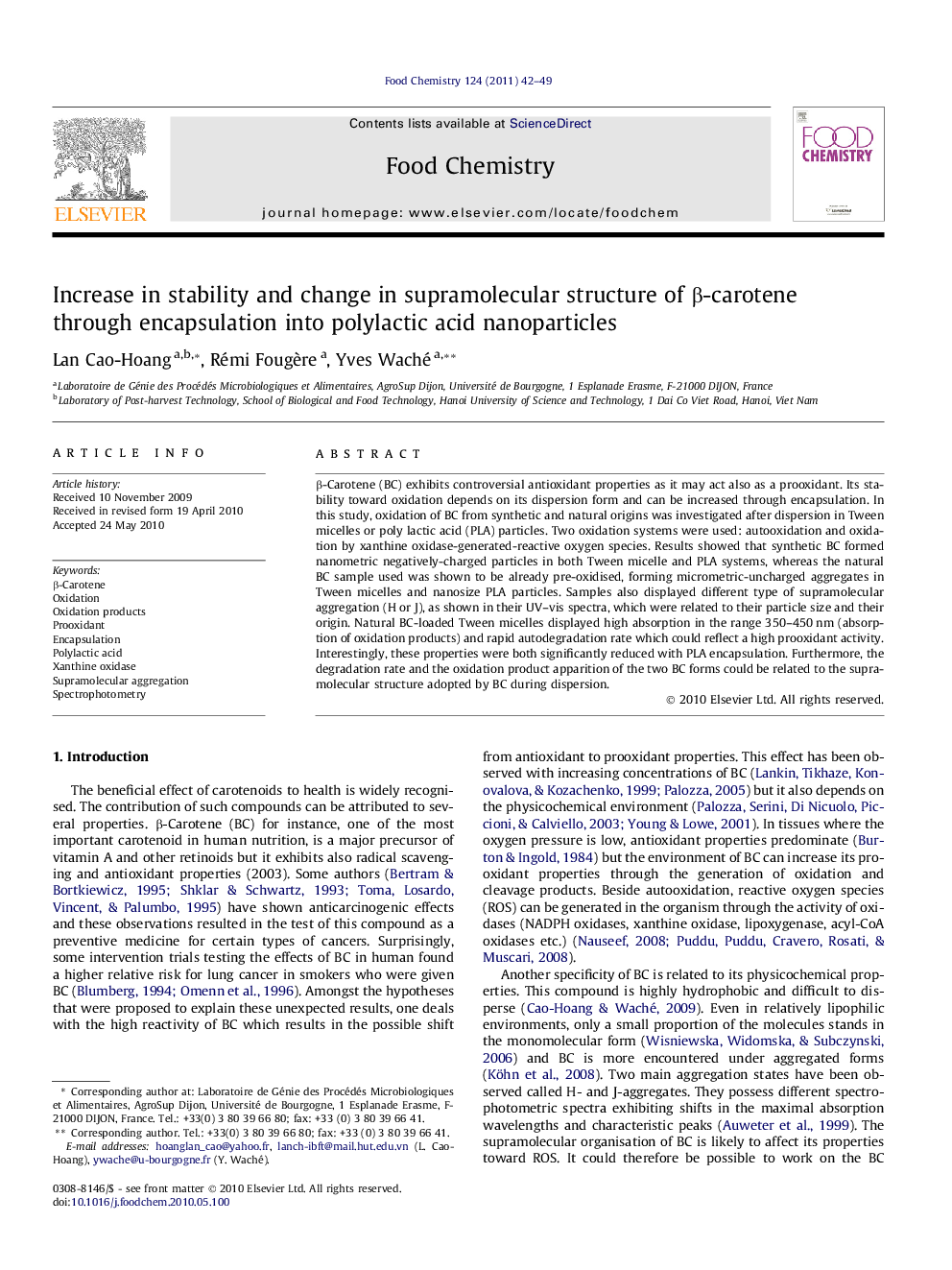| Article ID | Journal | Published Year | Pages | File Type |
|---|---|---|---|---|
| 1187625 | Food Chemistry | 2011 | 8 Pages |
β-Carotene (BC) exhibits controversial antioxidant properties as it may act also as a prooxidant. Its stability toward oxidation depends on its dispersion form and can be increased through encapsulation. In this study, oxidation of BC from synthetic and natural origins was investigated after dispersion in Tween micelles or poly lactic acid (PLA) particles. Two oxidation systems were used: autooxidation and oxidation by xanthine oxidase-generated-reactive oxygen species. Results showed that synthetic BC formed nanometric negatively-charged particles in both Tween micelle and PLA systems, whereas the natural BC sample used was shown to be already pre-oxidised, forming micrometric-uncharged aggregates in Tween micelles and nanosize PLA particles. Samples also displayed different type of supramolecular aggregation (H or J), as shown in their UV–vis spectra, which were related to their particle size and their origin. Natural BC-loaded Tween micelles displayed high absorption in the range 350–450 nm (absorption of oxidation products) and rapid autodegradation rate which could reflect a high prooxidant activity. Interestingly, these properties were both significantly reduced with PLA encapsulation. Furthermore, the degradation rate and the oxidation product apparition of the two BC forms could be related to the supramolecular structure adopted by BC during dispersion.
